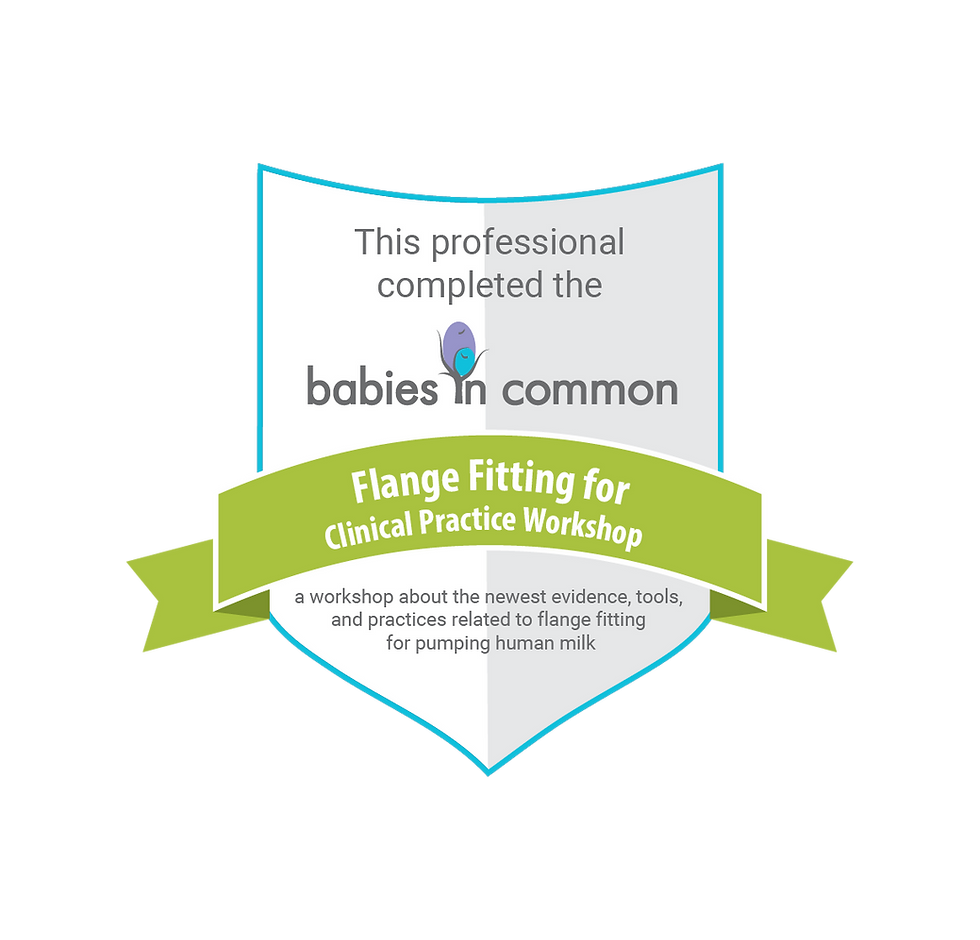"Introducing Bottle Feeding to Your Breastfed Baby: Tips and Techniques"
- Karen Williams IBCLC

- Apr 30, 2024
- 3 min read
Some out of want or need give their baby a bottle. This could be due to the family's mental or physical health, or there may be a concern regarding weight gain or milk supply levels and supplementation is a must.
Whether you want to give the odd bottle or transition to bottle full time, you may find it tricky.
Here are a few tips you may find helpful.
Type of teat ....
Babies are clever little souls and not easily confused, however, they may have a flow preference. We're looking for babies to be drinking about an ounce or 60ml in around 5 minutes, longer than that and they are likely to get tired, quicker they are likely to become overwhelmed by the milk and wind.
Ideally look to be giving them the slowest teat that allows your baby to be able to take the milk at a pace of around 5 minutes per ounce, for example 3 oz / 90 ml would take about 15 minutes. Teats come in a variety of flows, which means how quickly the milk is released, the lower the number (0,1,2) the slower the release of milk.
Teats that are marketed as 'shaped like a breast', generally do not resemble the average breast, when did your boobs ever look like that? Short, inflexible nipple and a bowl shaped tissue, quite probably day 3-4, when you were engorged as heck! Could your baby latch on then? Chances are they found it difficult (although some don't have an issue).
Just like breastfeeding we want the tip of the nipple to touch the soft palate, so it's likely that a longer narrower test is better.

Top tip : How to give the bottle...
Gravity feeding is the traditional way to feed a bottle to a baby,
baby on their back
bottle pointed at the ceiling
no breaks given
likely to see milk pouring from the corner of the mouth
more likely to not cope with flow
more likely to have reflux and colic issues
more likely to vomit
more likely to over feed
more likely to be unable to recognise a full tummy feeling
When starting to give the bottle, your little one may need a little encouragement, so choosing a time when your both
are not tired or hungry
dip the teat into the breastmilk, so to have a familiar taste and smell
have plenty of time to relax
it may take a good few tries, make it fun
allow someone else to give the bottle, or turn your baby away from you
experiment with milk temperature
stimulate the gapping reflex by touching the chin with the teat of the bottle
try using external stimuli, read a book, bounce on the bed, sing, walk about
keep it light, no pressure to drink
try some skin to skin, just as your little one has while nursing, even if it's cheek on your upper chest / shoulder
Paced feeding is now to recommended way to give a bottle, be this a fully formula fed baby or the occasional bottle of breastmilk:
baby sit baby up
your baby is more likely to cope with flow
more likely to only take what they need
less likely to have reflux and colic issues
less likely to vomit less likely to over feed
more likely to recognise the feeling of being full

Tips on paced feeding
dip the outside of the teat in your milk, to give a familiar taste
sit baby up towards you on your knee
aim to use the smallest teat possible to give 30ml/ 1/2 oz per 5 minutes, so 90ml around 15 mins, any quicker, baby may become gassy or not cope with the flow, any slower baby may need to work hard in order to take the milk
try to let baby have some skin to skin, even if it's just cheek on your shoulder
Half way through the feed, it's good practice that you switch sides, just as you do when nursing. This will help with brain, eye and core muscle development and conditioning.
You may have heard that breastfed babies can reject a bottle, develop a bottle preference or even become confused by the bottle, after a certain amount of weeks, this usually due to the way they are given the bottle, paced feeding can support them to take the bottle. The techniques of sucking are very different when drinking from a bottle and nursing. Your little one may just need time to develop the new skill of taking a bottle.
Top Tip: after 4-5 months you could even skip bottles entirely, especially as you begin to introduce solids at around 6 months. NHS guidelines suggest coming away from bottles by one year, due to the impact it could have on their teeth you could try:
a sippy / dodi cup
a straw
an open plastic cup (as they get slightly older)






Comments